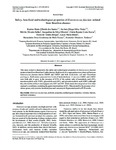Use este identificador para citar ou linkar para este item:
http://www.alice.cnptia.embrapa.br/alice/handle/doc/1022780Registro completo de metadados
| Campo DC | Valor | Idioma |
|---|---|---|
| dc.contributor.author | SANTOS, K. M. O. dos | pt_BR |
| dc.contributor.author | VIEIRA, A. D. S. | pt_BR |
| dc.contributor.author | SALLES, H. O. | pt_BR |
| dc.contributor.author | OLIVEIRA, J. da S. | pt_BR |
| dc.contributor.author | ROCHA, C. R. C. | pt_BR |
| dc.contributor.author | BORGES, M. de F. | pt_BR |
| dc.contributor.author | BRUNO, L. M. | pt_BR |
| dc.contributor.author | FRANCO, B. D. G. de | pt_BR |
| dc.contributor.author | TODOROV, S. D. | pt_BR |
| dc.date.accessioned | 2015-08-27T11:11:11Z | pt_BR |
| dc.date.available | 2015-08-27T11:11:11Z | pt_BR |
| dc.date.created | 2015-08-27 | pt_BR |
| dc.date.issued | 2015 | pt_BR |
| dc.identifier.citation | Brazilian Journal of Microbiology, São Paulo, v. 46, n. 1, p. 237-249, Mar. 2015. | pt_BR |
| dc.identifier.uri | http://www.alice.cnptia.embrapa.br/alice/handle/doc/1022780 | pt_BR |
| dc.description | This study aimed to characterize the safety and technological properties of Enterococcus faecium strains isolated from Brazilian Coalho cheeses. High levels of co-aggregation were observed between Enterococcus faecium strains EM485 and EM925 and both Escherichia coli and Clostridium perfringens. Both strains presented low levels of hydrophobicity. E. faecium EM485 and EM925 were both able to grow in the presence of 0.5% of the sodium salts of taurocholic acid (TC), taurodeoxycholic acid (TDC), glycocholic acid (GC), and glycodeoxycholic acid (GDC), although they showed the ability to deconjugate only GDC and TDC. Both strains showed good survival when exposed to conditions simulating the gastro intestinal tract (GIT). When tested for the presence of virulence genes, only tyrosine decarboxylase and vancomycin B generated positive PCR results. | pt_BR |
| dc.language.iso | eng | eng |
| dc.rights | openAccess | eng |
| dc.subject | Probiotic properties | pt_BR |
| dc.subject | Technological properties | pt_BR |
| dc.subject | Probiótico | pt_BR |
| dc.subject | Resistência a antibiótico | pt_BR |
| dc.subject | Cheese | pt_BR |
| dc.subject | Resistance to antibiotics | pt_BR |
| dc.title | Safety, beneficial and technological properties of Enterococcus faecium isolated from Brazilian cheeses. | pt_BR |
| dc.type | Artigo de periódico | pt_BR |
| dc.date.updated | 2016-02-29T11:11:11Z | pt_BR |
| dc.subject.thesagro | Segurança alimentar | pt_BR |
| dc.subject.thesagro | Queijo | pt_BR |
| dc.subject.nalthesaurus | Enterococcus faecium | pt_BR |
| dc.subject.nalthesaurus | Food security | pt_BR |
| dc.subject.nalthesaurus | Probiotics | pt_BR |
| riaa.ainfo.id | 1022780 | pt_BR |
| riaa.ainfo.lastupdate | 2016-02-29 | pt_BR |
| dc.identifier.doi | http://dx.doi.org/10.1590/S1517-838246120131245 | pt_BR |
| dc.contributor.institution | KARINA MARIA OLBRICH DOS SANTOS, CTAA; ANTÔNIO DIOGO SILVA VIEIRA, USP; HEVILA OLIVEIRA SALLES FIGUEIREDO, CNPC; JACQUELINE DA SILVA OLIVEIRA; CÍNTIA RENATA COSTA ROCHA, UFPE; MARIA DE FATIMA BORGES, CNPAT; LAURA MARIA BRUNO, CNPAT; BERNADETTE DORA GOMBOSSY DE MELO FRANCO, USP; SVETOSLAV DIMITROV TODOROV, USP. | pt_BR |
| Aparece nas coleções: | Artigo em periódico indexado (CNPC)  | |
Arquivos associados a este item:
| Arquivo | Descrição | Tamanho | Formato | |
|---|---|---|---|---|
| cnpc2015Safety.pdf | 1,02 MB | Adobe PDF |  Visualizar/Abrir |









